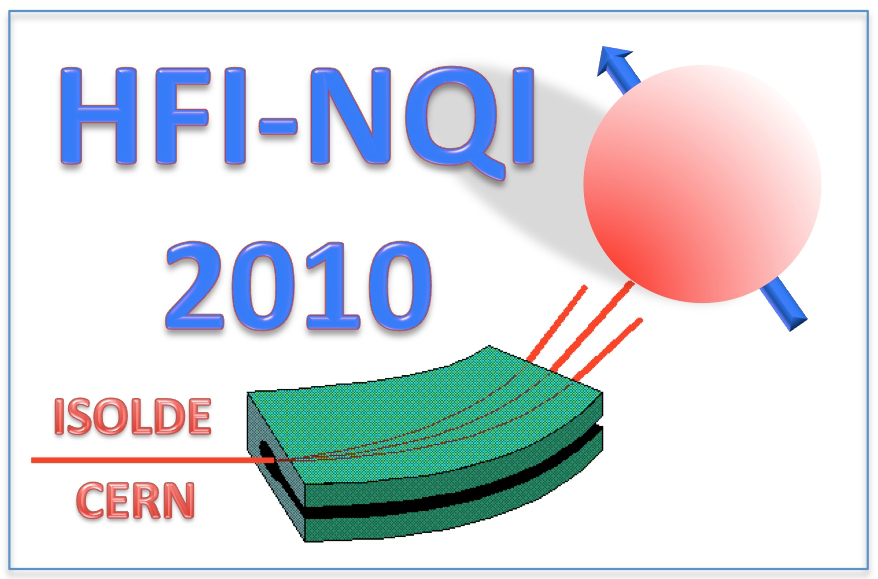Speaker
Prof.
José Mestnik-Filho
(Instituto de Pesquisas Energéticas e Nucleares)
Description
The investigation on wide-band gap semiconductors doped with transition metals (TM) has attracted a considerable interest in last years, mostly because of its possible applications in the spintronic field. Among these materials, cobalt-doped zinc oxide (Co-doped ZnO) has been one of the most investigated systems. Despite the focus on the magnetic aspect in these compounds in order to reach ferromagnetic ordering at room temperature, there is still enough space for some interesting questions regarding electronic structure that might be investigated. The study of the possible changes in the electronic structure caused by the introduction of a TM, is a question of great interest, especially if it is necessary to introduce large quantities of TM and carriers. One of the quantities that can be used in order to observe the differences in the electronic structure of a given crystalline site, is the electric field gradient (EFG), since is a very sensitive parameter that may reveal even small changes occurring in an atomic scale. In this way, in the reference [1] it is presented PAC results at 111Cd probe inserted in pure ZnO and 5% Co-doped ZnO. Two measurements on pure compound were performed; one with a commercially available sample and the other one was prepared at our laboratory together with the Co-doped sample utilizing sol-gel methodology. It was observed that the perturbation spectra are practically identical for all of the three situations, with Cd quadrupole frequency (νq) assuming values within the 31-32 MHz range. Yet in another work [2], it was developed a systematic PAC study with the 111Cd probe focusing on the concentration variation of cobalt dopant in ZnO within the 5 – 15 % Co range. These samples have a single ZnS-type phase and presented a same major fraction of sites with a very similar quadrupole frequency νq in the range between 31.1 – 33.1 MHz. In the present work we try to explain which electronic phenomena could be occurring when Co-doped ZnO do not generate any change at Cd efg. For this purpose we used first principles electronic structure calculations, carried out within the Density Functional Theory (DFT) framework using Linearized Augment Plane Waves methods (LAPW) embodied at the WIEN2k code [3]. In our calculations, several ZnO cells were set up with Cd and/or Co ions and then, different Cd neighborhoods were simulated. The electric field gradient at Cd, the density of states (DOS) and charge density distributions were analyzed. The resulted EFG at Cd are in agreement with the experimental values [2]. By means of DOS it was observed that both the Co and Zn electronic structure are very similar. References [1] M.E. Mercurio, A.W. Carbonari et al., J. Magn. Magn. Mater. 322, 1195 (2010). [2] M.E. Mercurio, A.W. Carbonari, oral communication. To be published. [3] Blaha, P., Schwarz et al: WIEN2K, an Augmented Plane Wave plus Local Orbitals… . Karlheinz Schwarz, Techn. Universität Wien, Austria. ISBN 3-9501031-1-2 (2001).
| Are you a student, a delegate from developing countries or a participant with physical needs and would like to apply for a sponsored accomodation. Please answer with yes or no. | yes |
|---|---|
| Please specify whether you would prefer an oral or poster contribution. | poster |
Author
Mr
Luciano Pereira
(Instituto de Pesquisas Energéticas e Nucleares)
Co-authors
Prof.
Artur Carbonari
(Instituto de Pesquisas Energéticas e Nucleares)
Mr
Emiliano Muñoz
(Departamento de Física e Instituto de Física La Plata)
Prof.
José Mestnik-Filho
(Instituto de Pesquisas Energéticas e Nucleares)
Mr
Moacir Cordeiro
(Instituto de Pesquisas Energéticas e Nucleares)
Mr
Márcio Mercúrio
(Instituto de Pesquisas Energéticas e Nucleares)
Prof.
Mário Rentería
(Departamento de Física e Instituto de Física La Plata)
Prof.
Rajendra Saxena
(Instituto de Pesquisas Energéticas e Nucleares)
